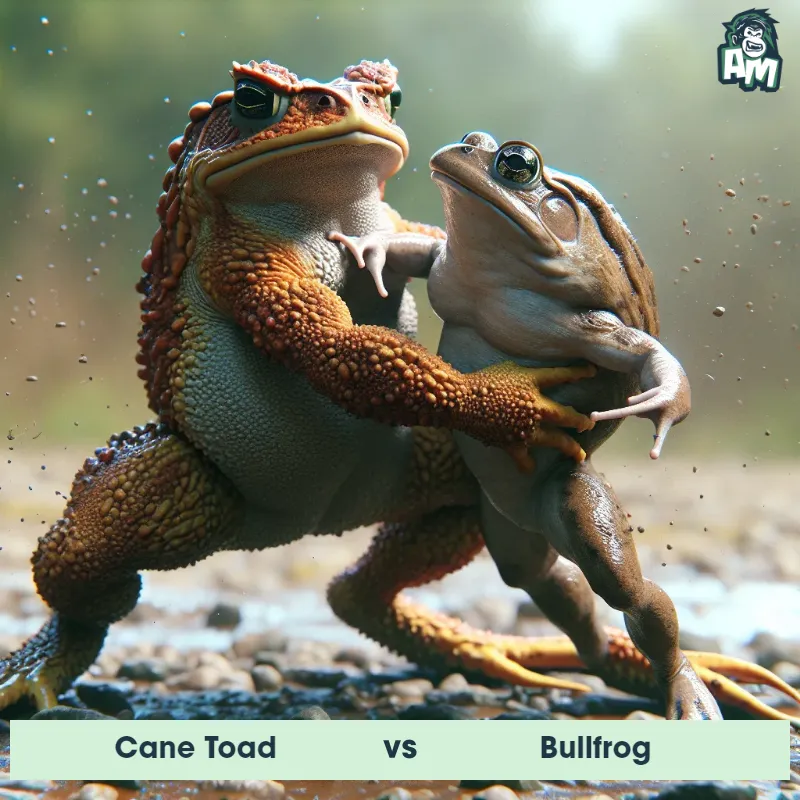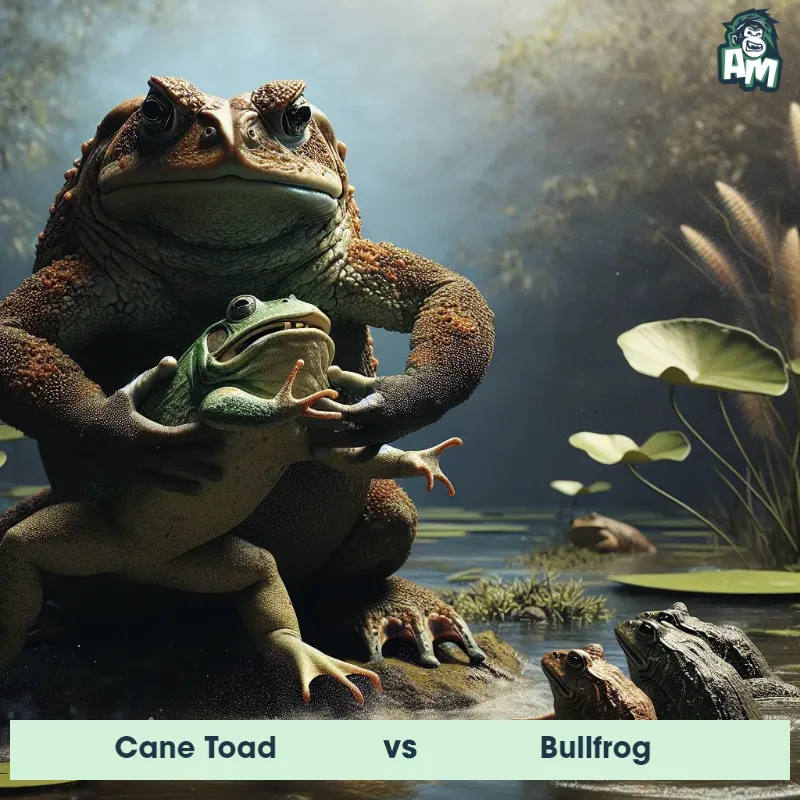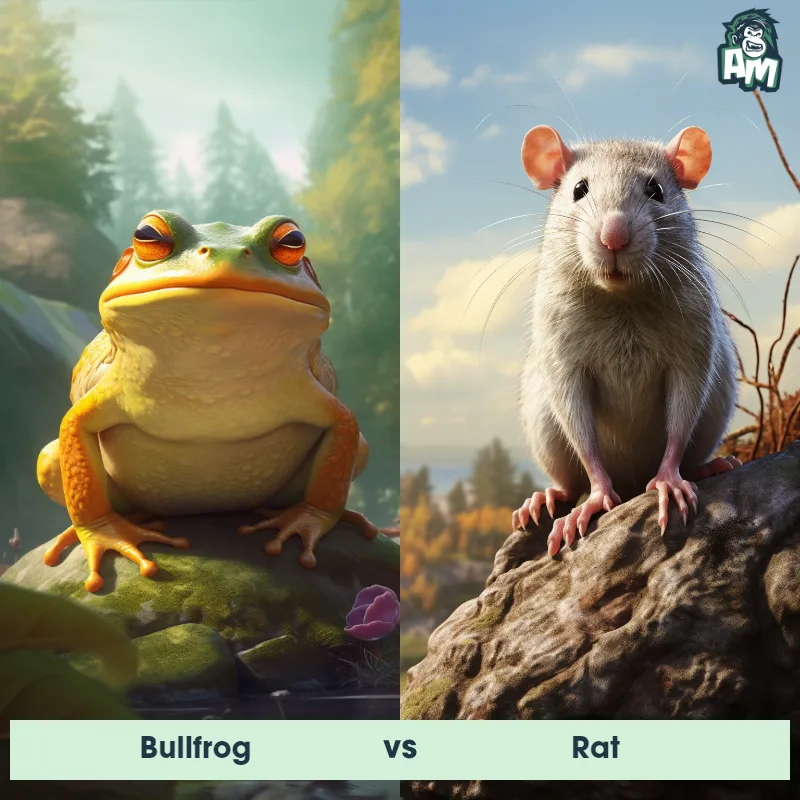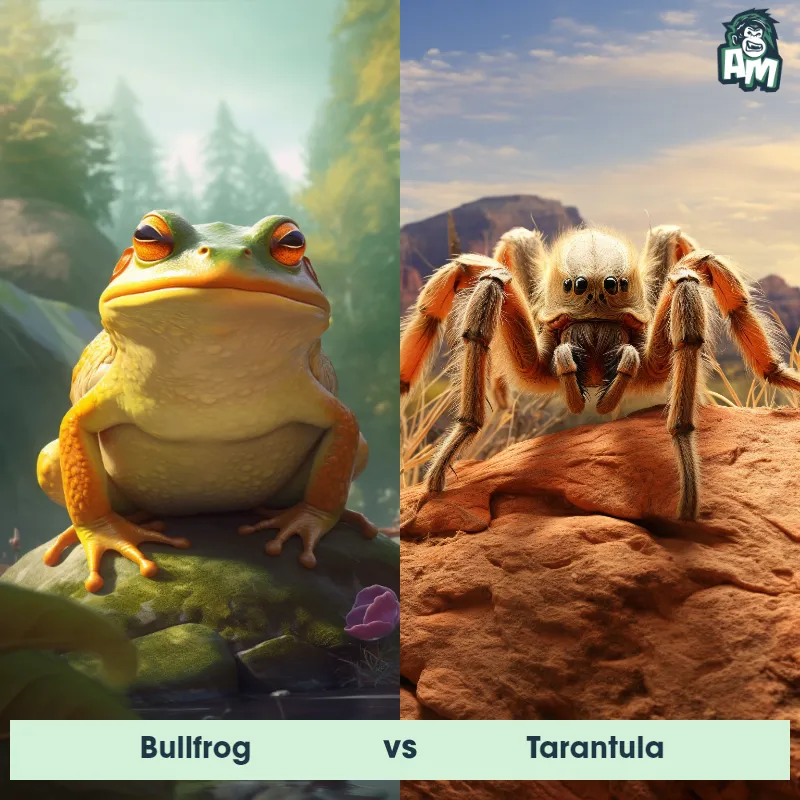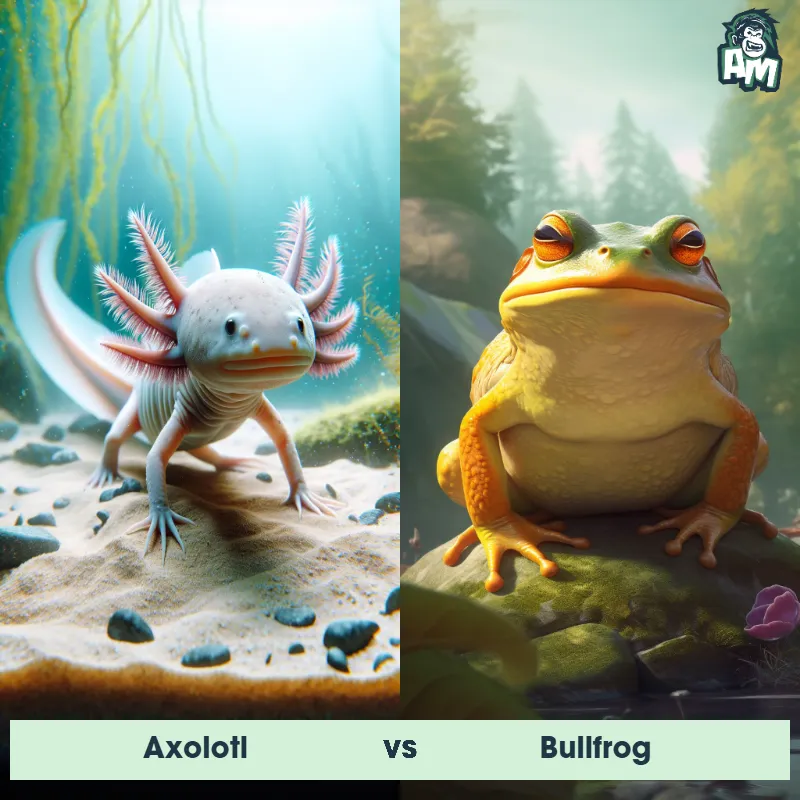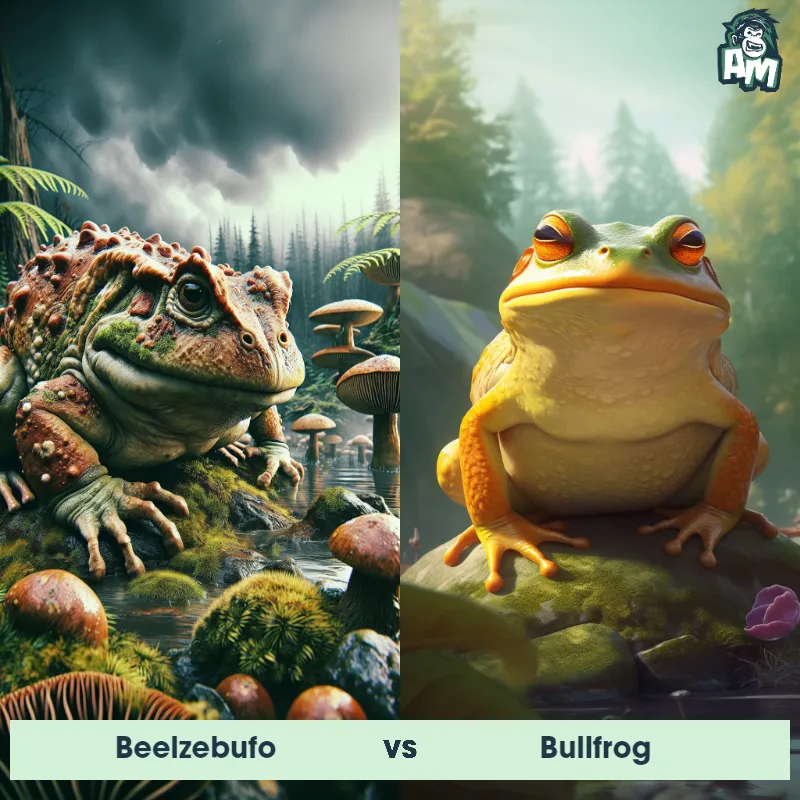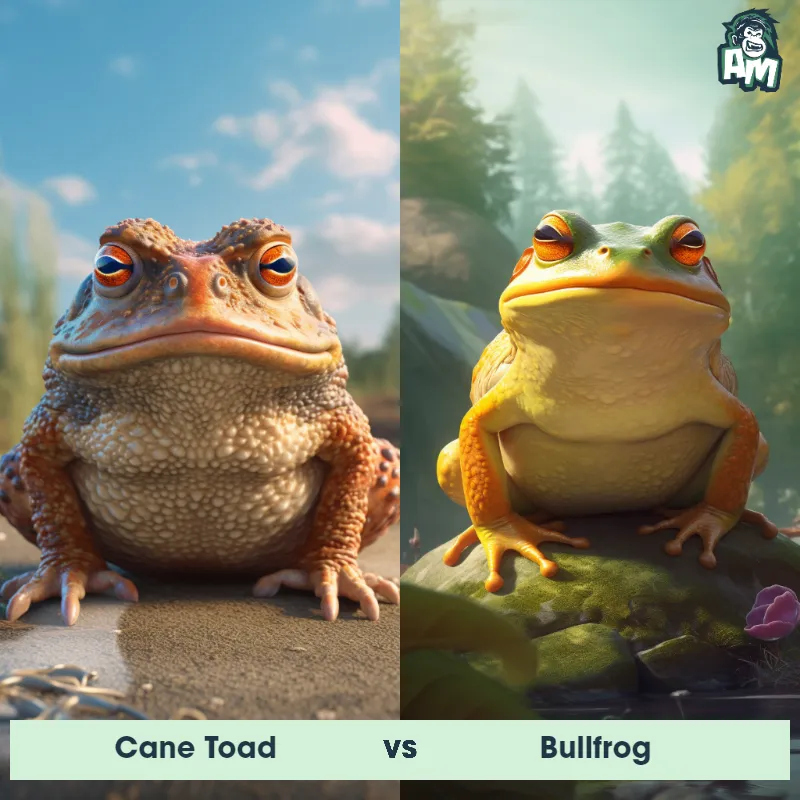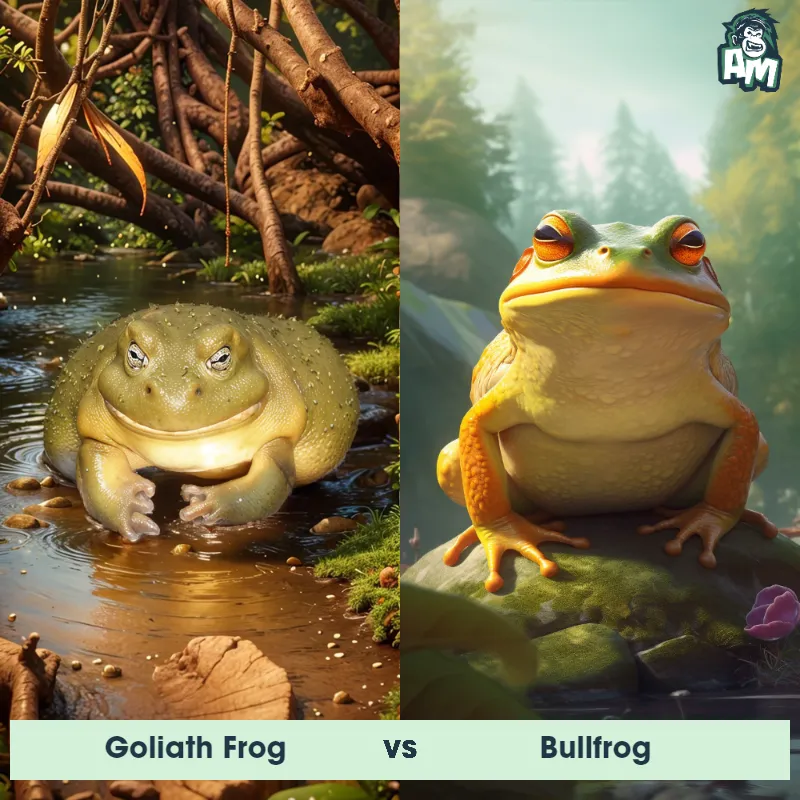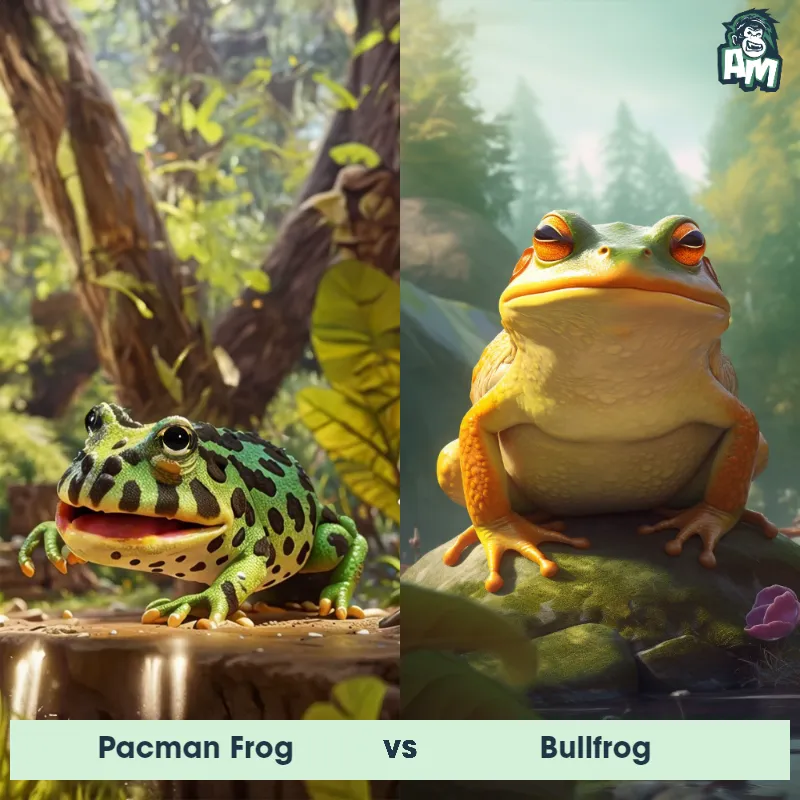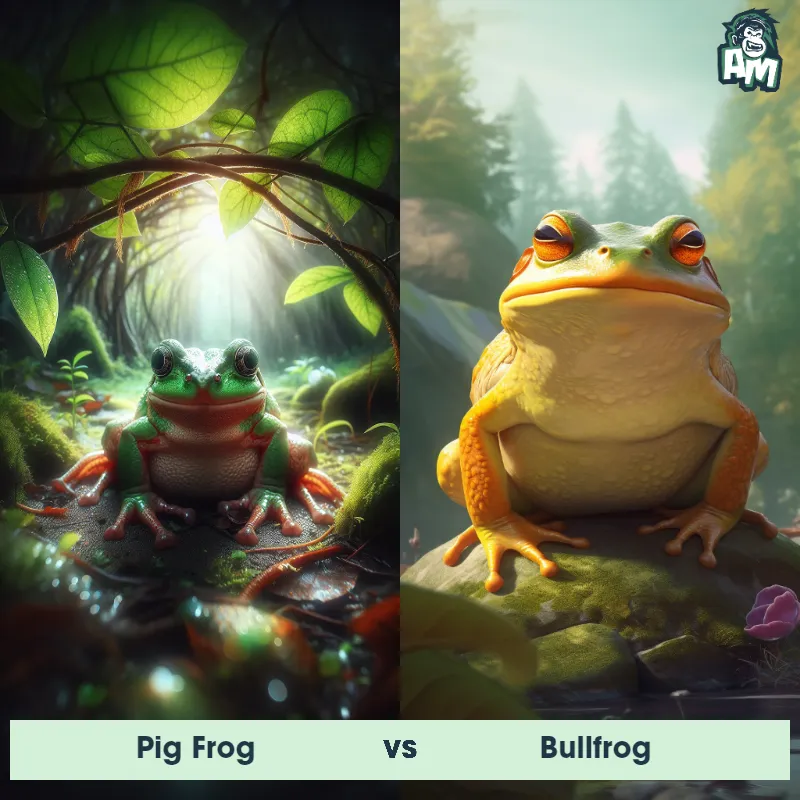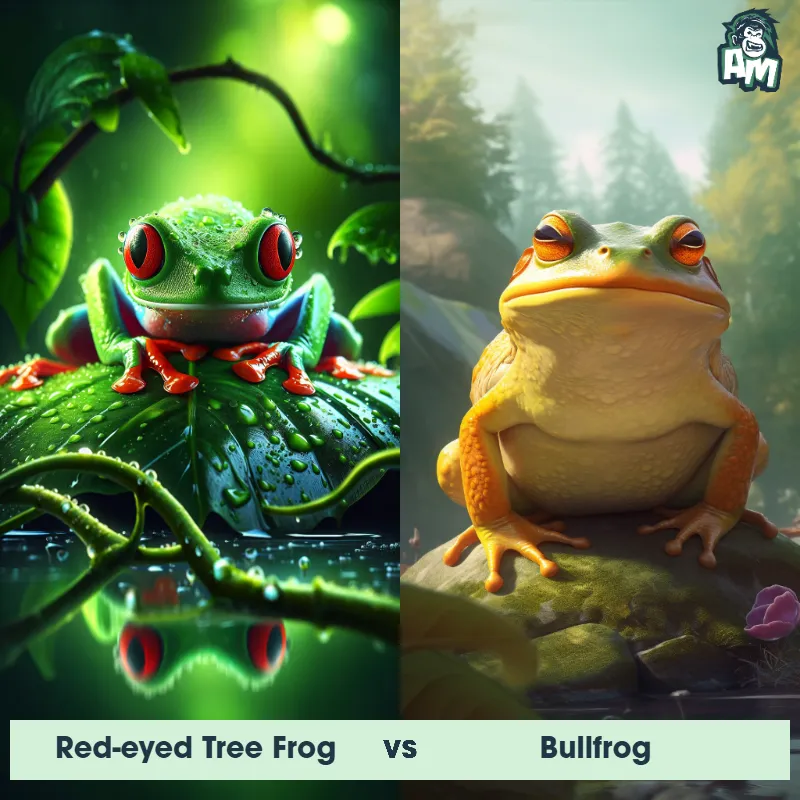The Bullfrog
The Bullfrog Lithobates catesbeianus, also known as the American Bullfrog, is a large amphibian species native to eastern North America. This species is well-known for its distinct loud call, which sounds like a deep "jug-o-rum." It is one of the largest frogs in North America, measuring around 3.6 to 6 inches in length. The Bullfrog has a powerful hind legs that enable it to leap long distances, and its webbed feet allow it to swim and move efficiently through water. Its skin is smooth and typically green or brown, enabling it to blend in with its surroundings. They have a long lifespan, with some individuals living for up to 15 years.

| Bullfrog | |
|---|---|
| Size | Up to 8 inches (20.3 cm) |
| Weight | Up to 1.5 pounds (0.68 kg) |
| Speed | Speed: 6 mph (9.7 km/hr) |
| Key Strength | Powerful hind legs for jumping and escaping |
| Biggest Weakness | Vulnerable to predators when on land |
| Scientific Name | Lithobates catesbeianus |
| Family | Ranidae |
| Habitat | Freshwater ponds, lakes, and marshes |
| Geography | North America |
| Diet | Insects, fish, snakes, and other frogs |
| Lifespan | 6 years - 14 years |

The Bullfrog
The Bullfrog Lithobates catesbeianus, also known as the American Bullfrog, is a large amphibian species native to eastern North America. This species is well-known for its distinct loud call, which sounds like a deep "jug-o-rum." It is one of the largest frogs in North America, measuring around 3.6 to 6 inches in length. The Bullfrog has a powerful hind legs that enable it to leap long distances, and its webbed feet allow it to swim and move efficiently through water. Its skin is smooth and typically green or brown, enabling it to blend in with its surroundings. They have a long lifespan, with some individuals living for up to 15 years.
Fun Fact: The Bullfrog possesses a remarkable appetite and is known to be voracious eaters, capable of consuming prey that is even larger than itself, such as birds, mice, snakes, and other frogs.
| Bullfrog | |
|---|---|
| Size | Up to 8 inches (20.3 cm) |
| Weight | Up to 1.5 pounds (0.68 kg) |
| Speed | Speed: 6 mph (9.7 km/hr) |
| Key Strength | Powerful hind legs for jumping and escaping |
| Biggest Weakness | Vulnerable to predators when on land |
| Scientific Name | Lithobates catesbeianus |
| Family | Ranidae |
| Habitat | Freshwater ponds, lakes, and marshes |
| Geography | North America |
| Diet | Insects, fish, snakes, and other frogs |
| Lifespan | 6 years - 14 years |
Match Highlights
Bullfrog Matchups
We use AI to simulate matchups between the Bullfrog and other animals. Our simulation considers size, strength, and natural predatory behaviors to determine the most likely outcome.
Bullfrog: Diet, Predators, Aggression, and Defensive Behaviors
What do Bullfrogs eat?
Bullfrogs are carnivorous and primarily eat insects, worms, small fish, and tadpoles. They are opportunistic feeders and will consume almost anything that can fit in their mouths. They are known to be voracious eaters and play a crucial role in controlling insect populations in their habitats.
Do Bullfrogs have any predators?
Yes, Bullfrogs have several predators in the wild, including snakes, birds of prey, raccoons, otters, and larger fish. These predators mainly target young Bullfrogs or tadpoles, but adult Bullfrogs can also fall prey to larger predators due to their size and vulnerability.
Are Bullfrogs aggressive?
Bullfrogs are known to be territorial and aggressive towards other frogs, especially during the breeding season. Male Bullfrogs can be aggressive towards each other when competing for mates or territory, leading to physical fights or vocal competitions to establish dominance.
Do Bullfrogs fight?
While Bullfrogs do not engage in physical fights frequently, they can exhibit aggressive behavior towards each other, especially during the breeding season. This aggression is usually displayed through territorial displays, vocalizations, and occasional physical combat to establish dominance and secure mating opportunities.
How do Bullfrogs defend themselves?
Bullfrogs have several defense mechanisms to protect themselves from predators, including their ability to camouflage in their surroundings, their powerful hind legs for quick escapes, and their toxic skin secretions that can deter predators. When threatened, Bullfrogs may inflate their bodies to appear larger or emit loud distress calls to ward off potential threats.
What is the Bullfrog's biggest weakness in a fight?
Despite their size and strength, the Bullfrog's biggest weakness in a fight is their relatively slow movement on land compared to their agility in water. When facing a predator or a rival, Bullfrogs may struggle to escape quickly on land, making them vulnerable to attacks. Additionally, their aggressive behavior may attract larger predators or rivals, putting them at a disadvantage in physical confrontations.
Fun Fact: Bullfrogs have a unique adaptation called buccal pumping, whereby they use their large vocal sacs to draw air into their lungs. This allows them to produce their loud calls and serves as a resonant chamber during mating calls.
Fun Fact: Male Bullfrogs defend their territory and attract females by emitting a series of deep, booming calls, sounding like a rhythmic harmony of "jug-o-rum," which can be heard up to a mile away. The males with the loudest calls typically have the best chance of attracting mates.



